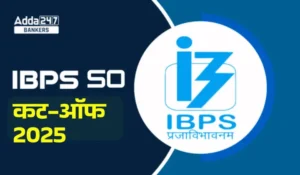Dear Readers,
Vocabulary is an important part of English that helps you deal with all kinds of questions in objective as well as descriptive papers of various exams. You can learn new words daily from our Daily Word List. Learn the words and make your own sentences on the basis of the given word list. Here are a few words from an article published in The Hindu.
The government’s bid to ease tensions with China has been met with some criticism, particularly over a leaked memo to officials telling them to stay away from events that commemorate the 60th anniversary of the Dalai Lama’s 1959 flight to India. This has led to the cancellation of several public events related to Tibet. Much of the criticism stems from the perception that the government is attempting to appease China by giving up its “Tibet card”. Clearly, giving in to China’s aggression on the subject is the wrong pretext to nuance its Tibet policy, and as the government has said, where the Dalai Lama goes within India is a sovereign issue. However, the bigger error may be for the government to be using Tibetan refugees in India as a card in its relations with China.
Deteriorating ties
To begin with, ties between New Delhi and Beijing have deteriorated over the past few years for a number of reasons unconnected to the Dalai Lama and the Tibetan population in India: border incursions, including the standoff at the part of Doklam claimed by Bhutan; India’s strategic shift in line with the U.S.’s Indo-Pacific pivot that targets China; China’s ‘deep-pocket’ inroads into South Asia; and differences on the international stage, including over the Nuclear Suppliers Group membership and terror designations to Masood Azhar. It would be simplistic to assume that these problems would go away if India were to make the Tibetan community and its leaderless visible. Therefore, while it is a mistake to play every visit of the Dalai Lama or official meeting with the leader of the ‘Tibetan government-in-exile’, Lobsang Sangay, as a ‘challenge to China’, it is equally ridiculous to portray strictures on their activities as a ‘peace offering to Beijing’.
Second, while Indian strategists have handed down the idea of a Tibet card for decades, it is time to revise this policy with a thorough evaluation of the ground, from New Delhi to Beijing and Lhasa to Dharamshala. For starters, the landscape of Tibet, now crisscrossed with railway lines, super-speed highways, tunnels and airports, has changed drastically in the past two decades. While many have written about the Beijing-Lhasa railway line, the Tibet Autonomous Region (TAR) now sees many more such engineering marvels (albeit at the cost of its environment), and downtown Lhasa has all the trappings of a modern city. All of this has made Tibet more self-reliant, with more jobs for the next generation. There’s an ongoing demographic shift in Tibet, with Beijing populating areas with majority ‘Han’ Chinese workers, encouraging mixed marriages, and mainstreaming Chinese culture into the region. At the same time, the outflow of refugees from Tibet has been curtailed by the Chinese authorities over the last decade, mainly by convincing Nepal to close a popular route. As a result, the number of new arrivals from Tibet into Dharamshala is down to a trickle and the once bustling informal trade route between India and Tibet has also dried up. Bollywood DVDs, once easily available in Lhasa’s bustling markets, have been replaced by Chinese and Tibetan films.
The new reality means that India’s population of the 100,000 or so registered Tibetan refugees are more cut off from developments in their homeland than ever before. New generations of Tibetans born in India are brought up as exiles, without a real sense of what Tibet may actually be like, should they ever return. As most live separately in about 40 settlements around India, they also have a tenuous link to the host country itself. The government’s attitude towards giving them citizenship has been stern, although it lost its case in the Delhi High Court (Namgyal Dolkar v. Government of India) and must give citizenship to all Tibetan refugees born between 1950 and 1987, the cut-off year. It will be equally important to devise a mechanism for those born after 1987, many now in their twenties, living in this limbo.
The bigger question that looms over the community is that of its future leadership. During his lifetime, the Dalai Lama has been a unifying force, guiding the community through their struggle in a peaceful manner, while accepting an autonomous Tibet as a part of China. While his spiritual incarnation will be chosen through a religious process, his political successor presents a more difficult task — he or she needs to be both groomed and publicly presented to the community at the earliest. The Dalai Lama himself has retained an air of mystery on the subject, suggesting at different times that his successor may be a woman, one born in a “free” land, or there may be none at all. Another possible leader, Ogyen Trinley Dorje, recognised by the Dalai Lama as the head of the Karma Kagyu sect after he escaped to Dharamshala in 2000, has been abroad for the past year. A cryptic message from his office says he will remain in the U.S. for “rest and recovery” from undisclosed “health concerns”, with no word on when he may return to India. The Central Tibetan Administration (CTA), which is empowered to run affairs and is headed by Mr. Sangay, may be the more democratic option, but it will need to carry the entire community with it. For the moment, the CTA is following a “five-50” path, to pursue talks with China in the next five years, while committing to a struggle for a more autonomous Tibet in the next 50 years. However, the past few years have seen a rise in the younger and more radical “Rangtsen” (freedom) groups that says they will settle for nothing short of an independent Tibet.
1. Appease: /əˈpiːz/ : शांत करना
Verb: pacify or placate (someone) by acceding to their demands.
Synonym: pacify, allay, assuage, mollify, placate, quell, subdue, quench
Antonym: aggravate, agitate, incite, provoke, arouse
2. Commemorate: / kəˈmɛməreɪt/ : पुण्यस्मरण करना
Verb: recall and show respect for (someone or something).
Synonym: celebrate, memorialize, perpetuate, solemnize
Antonym: disregard, overlook
3. Nuance: / ˈnjuːɑːns/ : अति सूक्ष्म अंतर
Noun: a subtle difference in or shade of meaning, expression, or sound.
Synonym: distinction, gradation, nicety, subtlety, dash
Antonym: brightness, information
4. Incursions: / ɪnˈkəːʃ(ə)n/: घुसपैठ
Noun: an invasion or attack, especially a sudden or brief one.
Synonym: aggression, attack, foray, inroad
Antonym: retreat
5. Standoff: / ˈstandɒf/ : गतिरोध
Noun: a deadlock between two equally matched opponents in a dispute or conflict.
Synonym: deadlock, impasse, stalemate, level
Antonym: agreement, breakthrough
6. Curtail: /kəːˈteɪl/ : घटाना
Verb: reduce in extent or quantity; impose a restriction on.
Synonym: cut back, diminish, trim, slash, chop
Antonym: extend, enlarge, amplify, raise
7. Bustle: / ˈbʌs(ə)/ : हलचल
Verb: move in an energetic and busy manner.
Synonym: tumult, clamor, furor, agitation
Antonym: calm, peace, quiet, delay
8. Tenuous: /ˈtɛnjʊəs/ : तुच्छ
Adjective: very weak or slight
Synonym: delicate, dubious, flimsy, attenuate, ethereal
Antonym: certain, definite, firm, substantial
9. Loom: /luːm/ : करघा
Noun: an apparatus for making fabric by weaving yarn or thread.
Synonym: brew, dominate, mount, hover, overshadow, portend
Antonym: decline, abandon, descend, neglect’
10. Incarnation: / ɪnkɑːˈneɪʃ(ə)n/ : अवतार
Noun: a person who embodies in the flesh a deity, spirit, or quality.
Synonym: embodiment, epitome, incorporation, manifestation



 IBPS SO मेन्स कटऑफ 2025 जारी - चेक करें ...
IBPS SO मेन्स कटऑफ 2025 जारी - चेक करें ...
 RRB Section Controller Application Statu...
RRB Section Controller Application Statu...
 SSC CGL Result 2025 OUT: टियर-1 रिजल्ट ज...
SSC CGL Result 2025 OUT: टियर-1 रिजल्ट ज...








